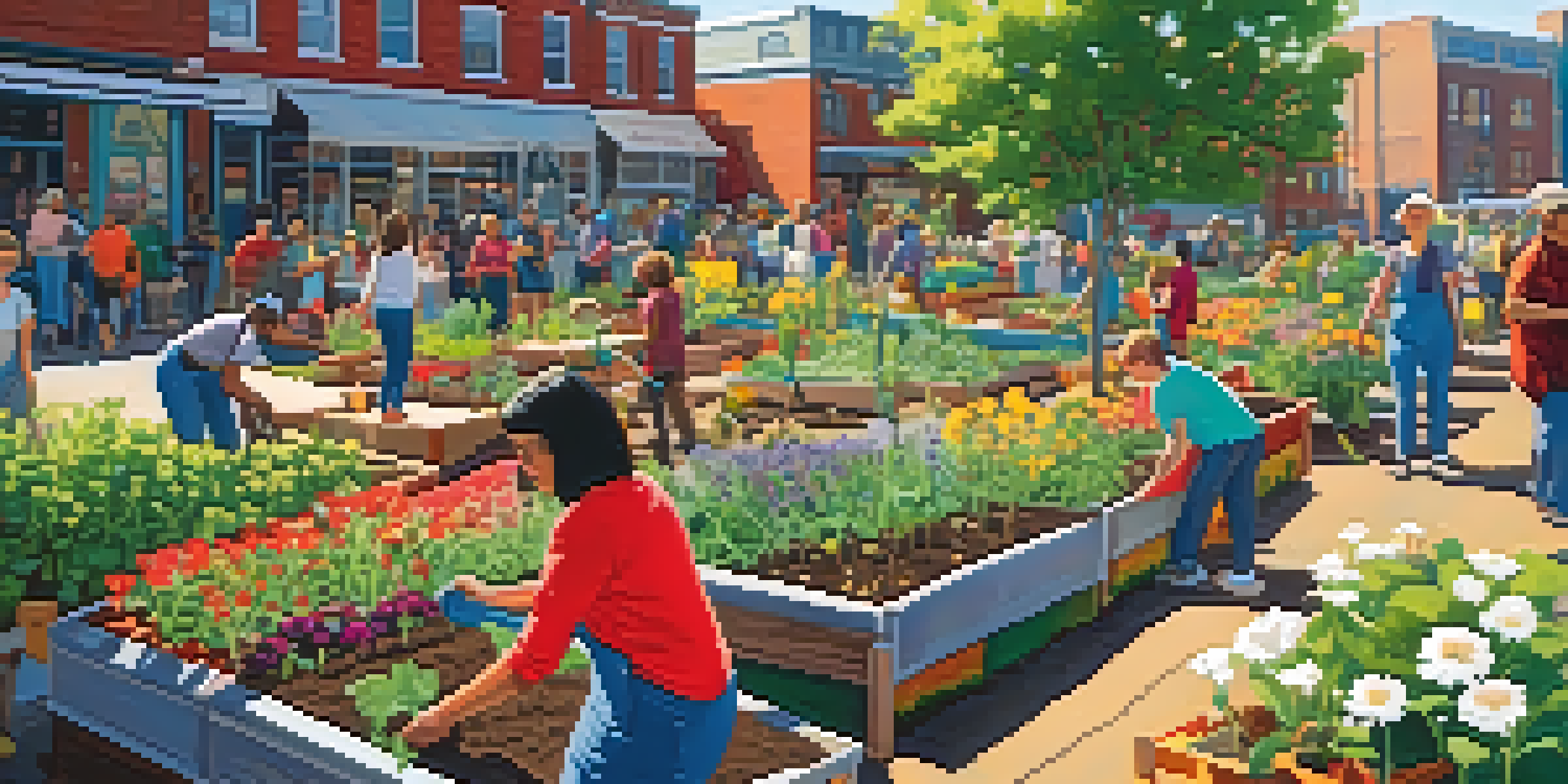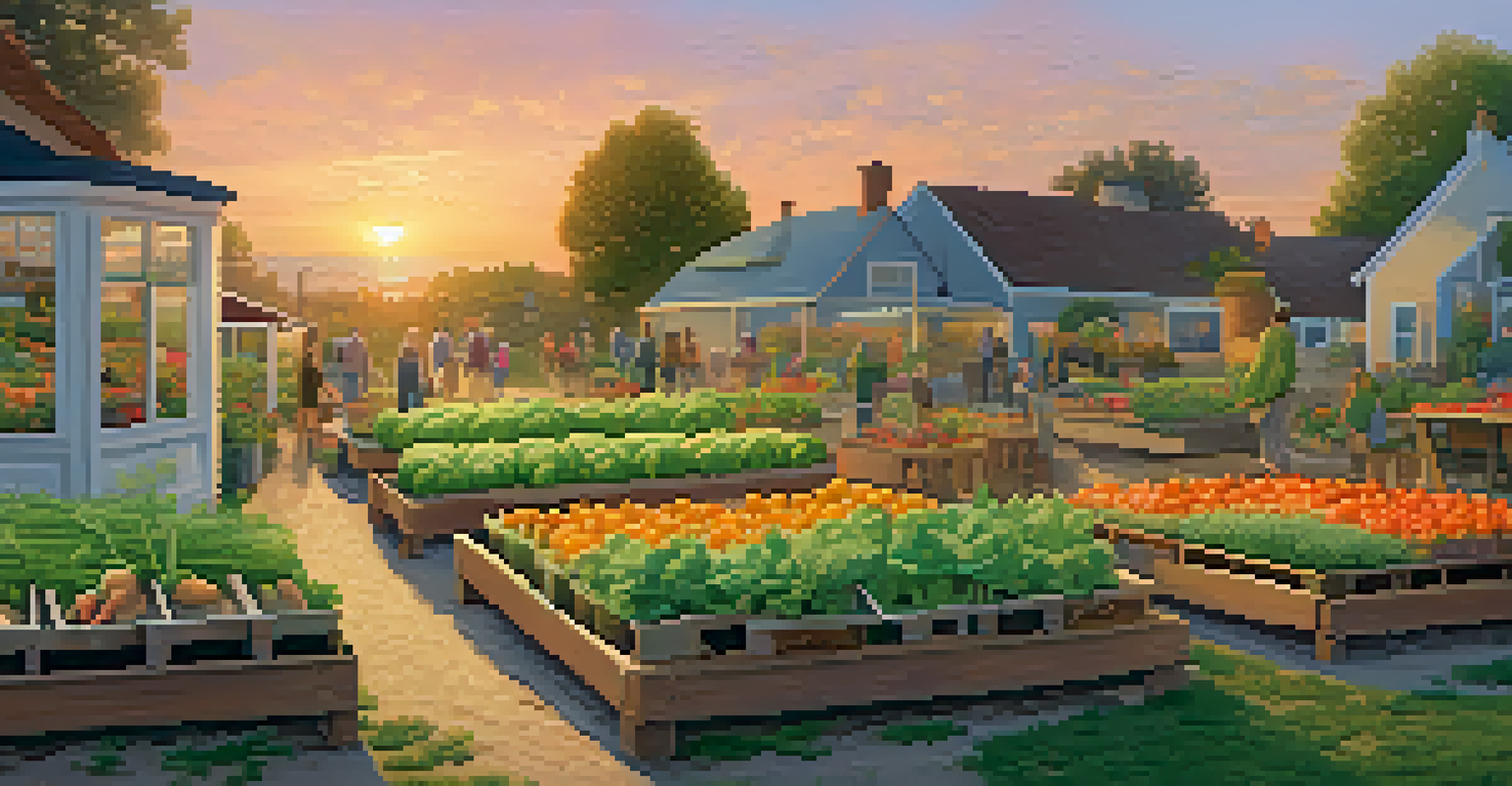Community Gardening Initiatives: Enhancing Neighborhood Cohesion

What Are Community Gardening Initiatives?
Community gardening initiatives involve a group of people coming together to cultivate shared plots of land. These gardens can be found in urban, suburban, and rural areas, and they often serve as a green oasis amidst concrete jungles. By involving local residents, these projects create a sense of ownership and pride, fostering an environment that encourages collaboration.
A garden is a friend you can visit any time.
Participants may grow vegetables, flowers, or herbs, and the produce is usually shared among members or donated to local food banks. This not only provides fresh produce but also enhances food security in neighborhoods. The sense of accomplishment derived from nurturing plants together can be incredibly rewarding, promoting emotional well-being.
In essence, community gardens become more than just spaces for plant growth; they transform into hubs of social interaction where friendships blossom, and community spirit thrives. This collective effort helps to break down barriers, allowing diverse groups to connect over a common goal.
Benefits of Community Gardening for Neighborhoods
Community gardening initiatives offer a multitude of benefits that extend beyond just fresh produce. They encourage physical activity, as gardening is a great way to get outside and stay active. Spending time in a garden can improve mental health, reduce stress, and foster a sense of belonging within the community.

Furthermore, these gardens often become educational spaces, teaching participants about sustainable practices, nutrition, and environmental stewardship. Workshops and events can be organized to share knowledge and skills, creating an informed community that values healthy living and sustainability.
Community Gardens Foster Connection
These initiatives not only provide fresh produce but also create strong bonds among neighbors, enhancing community spirit.
Lastly, community gardens can lead to increased property values in the neighborhood. A well-maintained garden adds aesthetic appeal and demonstrates care for the community, attracting potential homeowners and businesses alike.
Building Relationships Through Gardening
One of the most beautiful aspects of community gardening is the relationships that bloom alongside the plants. As neighbors work side by side, they share stories, traditions, and laughter, creating bonds that strengthen the fabric of the community. These interactions can help break down social barriers and foster inclusivity.
To plant a garden is to believe in tomorrow.
For instance, a seasoned gardener may mentor a newcomer, passing along valuable gardening tips while also sharing life experiences. This exchange not only helps the garden flourish but also enhances social cohesion, making everyone feel valued and connected.
Ultimately, these relationships often extend beyond the garden itself. Neighbors who may have never spoken before can find common ground and build lasting friendships, leading to a more supportive and engaged community.
Promoting Environmental Awareness Through Community Gardens
Community gardening initiatives play a significant role in promoting environmental awareness. By engaging individuals in hands-on gardening, participants learn about biodiversity, soil health, and the importance of native plants. This connection to nature can inspire a greater appreciation for the environment and sustainable practices.
In many cases, community gardens incorporate eco-friendly techniques, such as composting and organic pest control. Participants often become advocates for sustainability, encouraging their families and friends to adopt greener habits. This ripple effect can lead to broader environmental changes within the neighborhood.
Gardening Promotes Environmental Awareness
By engaging in community gardening, participants learn about sustainable practices and contribute to local biodiversity.
Moreover, community gardens can serve as a refuge for local wildlife, providing habitats for birds, bees, and beneficial insects. These small ecosystems contribute to urban biodiversity, demonstrating how even a small green space can have a significant impact on the environment.
Challenges Facing Community Gardening Initiatives
While community gardening initiatives offer numerous benefits, they also face challenges. Securing land can be a significant hurdle, especially in densely populated urban areas where space is limited. Local governments and organizations may need to collaborate to identify suitable plots of land that can be transformed into gardens.
Funding is another common obstacle. Many community gardens rely on grants, donations, and volunteer support to operate. Without sufficient resources, maintaining the gardens can become difficult, leading to diminished participation and eventual decline.
Additionally, community gardens depend on committed individuals to thrive. Ensuring consistent involvement from members can be a challenge, especially as life demands take over. Establishing a strong leadership structure and fostering a sense of community ownership can help combat this issue.
Successful Examples of Community Gardens
Around the world, there are inspiring examples of successful community gardening initiatives. For instance, the Incredible Edible movement in Todmorden, England, has transformed public spaces into gardens where anyone can pick fresh produce. This initiative not only provides food but has also sparked a community-wide commitment to sustainability.
In the heart of New York City, the GreenThumb program supports over 600 community gardens across the five boroughs. This program empowers local residents to transform vacant lots into vibrant green spaces, fostering community engagement and beautifying neighborhoods.
Challenges Include Land and Funding
Securing land and funding are significant obstacles that community gardening initiatives must overcome to thrive.
These examples illustrate the potential of community gardens to effect change, inspiring other neighborhoods to adopt similar initiatives. By sharing success stories, we can motivate others to pursue their gardening dreams and enhance their communities.
Getting Involved in Community Gardening
Getting involved in community gardening is easier than you might think! Start by researching local initiatives in your area, as many cities have community garden programs that welcome new members. Attending a meeting or volunteering for an event can be a great way to meet like-minded individuals and learn more about gardening.
If you don't have a community garden nearby, consider starting one with your neighbors. Gather a group of interested individuals, identify a suitable location, and reach out to local organizations for support and resources. It's a rewarding endeavor that can significantly enhance your neighborhood.

Remember, community gardening is about more than just growing food—it's about cultivating connections, sharing knowledge, and building a stronger community. Every little effort contributes to a greater impact, so get your hands dirty and dig in!